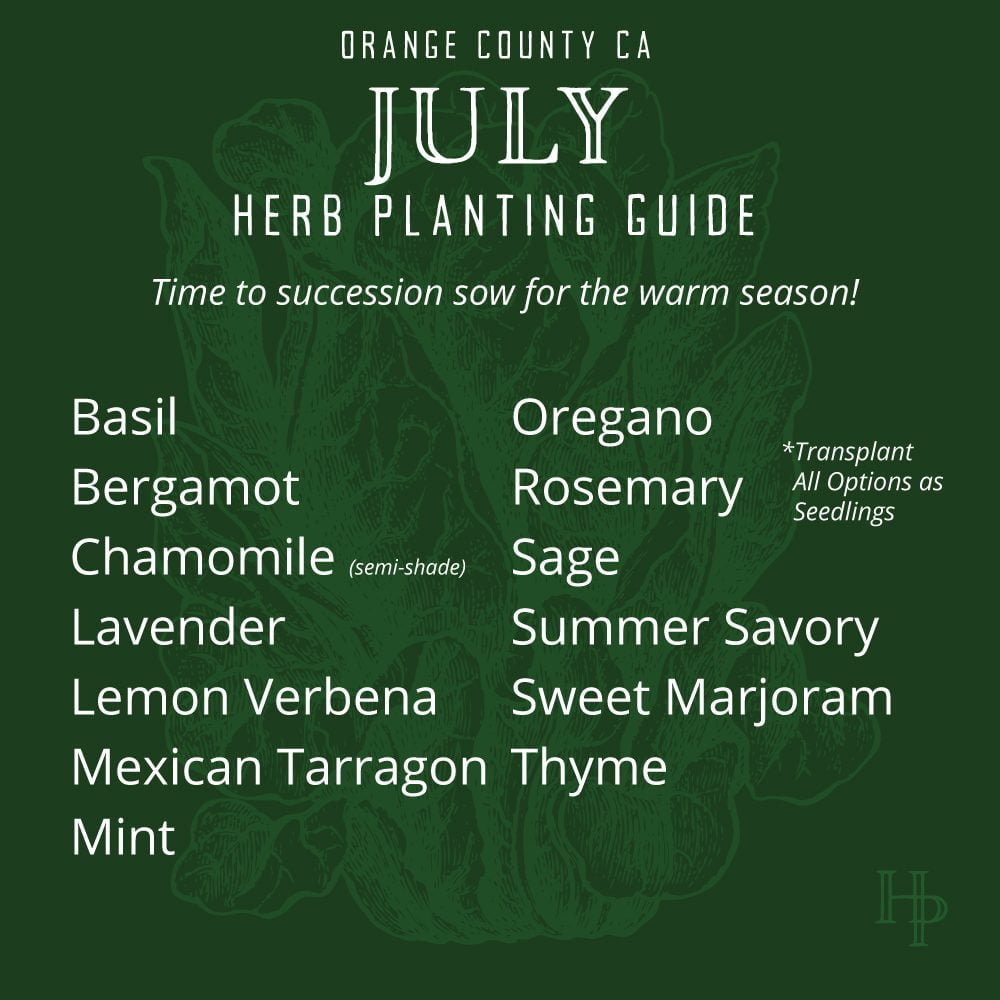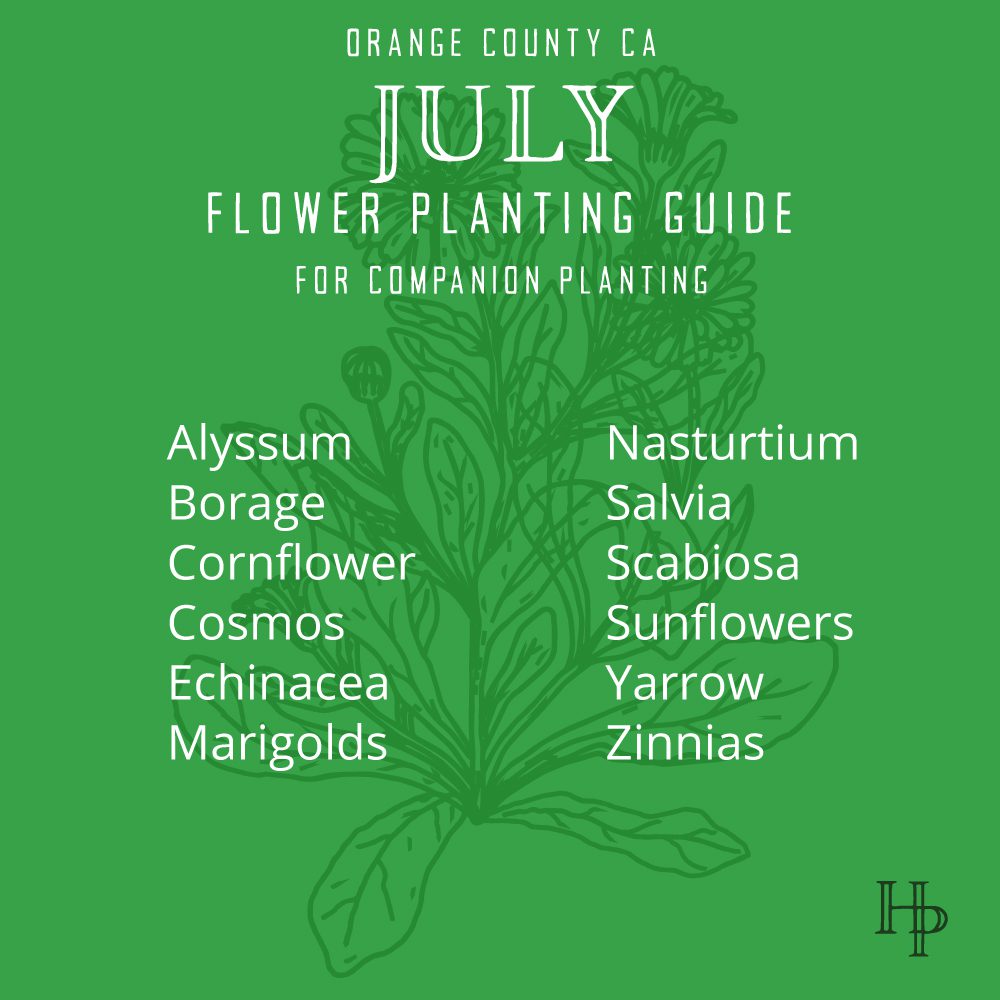Orange County July Planting Guide
July 1
3 MIN READ
0 Comments
Let’s Grow in Southern California
Summer has blossomed and it’s time for the July garden to amaze us with it’s splendor.
With hot summer days (and nights), it’s time to succession plant in the garden and create some shade options for young plants. It’s also a good time to review your cool season notes to plan for the cool season garden. Consider adding in more hot-season favorites like peppers, sweet potatoes, or okra in the hottest spaces in your garden. Don’t forget our suggested flower companion planting guide this month to bring more pollinators to your garden. Check out the Orange County CA July planting guide.
Disclaimer: Please note that some of the links on this page are affiliate links and Heirloom Potager earns a commission if you purchase through those links. We use these commissions to help fun our community give back program that offers garden education, garden development, and training for culinary students in Orange County, CA. We use all of the products that are recommended and only share because they are companies we have found worthy of the investment.
Planning a Summer Garden with Warm + Hot Season Plants



Here are a some great options for your June planting list:
Beans, Cantaloupe, Corn, Cucumbers, Eggplant, Melons, Orach, Okra, Peppers, Potatoes, Radish (in partial shade), Malabar Spinach, Summer Squash, Sweet Potatoes, Tomatoes, Watermelons, Winter Squash
Herbs: Basil, Bergamot, Lavender, Mint, Nasturtium, Oregano, Rosemary, Sage, Summer Savory, Sweet Marjoram, Thyme
*Transplant Seedlings
Unique Heirloom Varieties to Plant this Season
Practice Companion Planting for Your Summer Garden
Here are a some great companion plants for your June planting list:
Alyssum, Bachelor Buttons, Borage, Calendula, Cosmos, Echinacea, Marigolds, Nasturtium, Salvia, Scabiosas, Zinnias
Companion planting is a very old-world, organic gardening method rooted in creating a diverse ecosystem of fruits, vegetables, herbs, and flowers grown int he same space. As a result of inter-planting, you’ll create a more habitable environment for plants, improve soil health, and reduce the resources needed to grow sustainable amounts of produce.
Consider inter-planting some herbs with your fruits and vegetables this year to attract more pollinators and help keep pesky bugs at bay.
With a long and tenured history, the practice of companion planning was primarily practiced by home gardeners who weren’t driven solely by efficient outputs. However, as the impact of climate change grows and concerns over the use of pesticides for health increase, more and more gardeners (both home and commercial) are starting to implement the practice of companion planting.









Leave A Comment